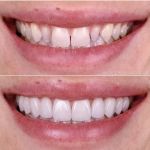- Understanding-types-and-importance
- Daily-cleaning-rituals
- Weekly-deep-cleaning-techniques
- Handling-different-appliance-materials
- Common-mistakes-to-avoid
- Real-life-stories-and-expert-tips
- Recommended-products-and-services
- Final-thoughts-and-next-steps
1. Understanding Types and Importance of Cleaning
1.1 Common Dental Appliances
Dental appliances such as retainers, night guards, dentures, and clear aligners play a vital role in maintaining oral health and correcting alignment. Each device has unique shapes and materials: acrylic for dentures, thermoplastic for retainers, and silicone for night guards. Learning how to clean dental appliances properly ensures their longevity and prevents buildup of bacteria, plaque, and odors that can harm your mouth and overall health.
1.2 Why Cleaning Matters
Unclean appliances harbor pathogens that contribute to gum inflammation, bad breath, and even systemic infections. A study by the Journal of Prosthetic Dentistry found that over 60% of denture wearers showed fungal growth on their devices within a week without adequate cleaning. Therefore, mastering how to clean dental appliances is not a cosmetic concern but a medical necessity, preserving both appliance function and your natural teeth and gums.
2. Daily Cleaning Rituals
2.1 Rinsing After Use
Begin and end each day by rinsing your appliance under warm running water to remove loose debris. This simple step prevents staining and reduces the load of biofilm that forms overnight. For clear aligners and retainers, avoid hot water, which can warp plastic.
2.2 Gentle Brushing Techniques
Use a soft-bristled toothbrush dedicated to your appliance—never the one you use for teeth—to gently scrub all surfaces with mild, non-abrasive soap or a specialized denture cleanser. Avoid toothpaste, which can be too gritty and cause micro-scratches where bacteria accumulate.
2.3 Drying and Storage
After cleaning, pat your appliance dry with a soft cloth and store it in a ventilated case. Accumulated moisture breeds mold. Investing in a case with air holes ensures proper airflow, keeping your appliance fresh until next use.
3. Weekly Deep Cleaning Techniques
3.1 Soaking in Cleaning Solutions
Once a week, soak your appliance in a cleaning solution designed for dental devices. Effervescent tablets containing sodium bicarbonate and citric acid penetrate stubborn stains and neutralize odors. Follow manufacturer instructions—soaking for 15–30 minutes typically suffices.
3.2 Vinegar and Baking Soda Alternative
For a DIY approach, mix equal parts white vinegar and water, soak for 20 minutes, then sprinkle baking soda and scrub gently. This natural method disinfects and brightens without harsh chemicals, ideal for sensitive materials.
3.3 Inspecting for Damage
Deep cleaning also allows you to inspect for cracks, warping, or loose parts. Early detection of wear prevents appliance failure and costly replacements. If you notice damage, consult your orthodontist or dentist promptly.
4. Handling Different Appliance Materials
4.1 Acrylic-Based Dentures
Acrylic dentures require gentle cleansers to avoid discoloration. Avoid bleach-containing solutions that can weaken acrylic. Instead, choose enzymatic cleansers that break down proteins without compromising structure.
4.2 Thermoplastic Aligners and Retainers
Clear aligners benefit from specialized cleaning crystals that preserve transparency. Do not use colored soaps or toothpaste. Regularly rinse and soak to avoid cloudiness—cloudy aligners not only look unsightly but can indicate bacterial colonization.
4.3 Silicone Night Guards
Silicone night guards tolerate mild dish soap but can degrade under high pH cleaners. Opt for gentle denture sprays or diluted antibacterial mouthwash. Dry thoroughly to maintain elasticity and prevent bacterial growth in crevices.
5. Common Mistakes to Avoid
5.1 Using Hot Water
High temperatures can warp plastic appliances, leading to poor fit and discomfort. Always use lukewarm or cool water for rinsing and soaking.
5.2 Skipping Regular Maintenance
Neglecting daily cleaning accelerates biofilm formation. Even if your appliance looks clean, microscopic bacteria can cause infections and odors. Consistency is key when learning how to clean dental appliances effectively.
5.3 Abrasive Tools and Powders
Abrasive cleansers or stiff brushes scratch surfaces, creating niches for bacteria. Stick to soft brushes and non-abrasive solutions recommended by dental professionals.
6. Real-Life Stories and Expert Tips
6.1 Patient Success Story
Emily, a college student wearing a Hawley retainer, shared how a lack of weekly deep cleaning led to yellowing and bad breath. After adopting a regimen—including daily rinsing and monthly vinegar soaks—her retainer stayed clear and odor-free, boosting her confidence during presentations.
6.2 Dentist’s Advice
Dr. Nguyen at Dentistry Toothtruth emphasizes, “Choosing the right cleanser is as important as the technique. Patients should avoid household bleach and look for products with the ADA Seal of Acceptance.” Personalized consultations at Dentistry Toothtruth can help determine the best cleaning schedule for individual needs.
7. Recommended Products and Services
7.1 Specialized Cleaning Kits
Kits like Polident Gentle Plus and Retainer Brite offer tablets formulated for various appliance materials. They include soft brushes and ventilated cases, delivering a complete care solution.
7.2 Subscription Services from Dentistry Toothtruth
Dentistry Toothtruth’s “Appliance Care Box” delivers monthly supplies—cleaning tablets, soft brushes, and storage cases—directly to your door. Subscribers receive expert tips and reminders, ensuring they never miss a cleaning cycle.
7.4 One-on-One Consultations
For complex appliances, schedule a virtual or in-office consultation with Dentistry Toothtruth experts. They provide personalized cleaning protocols, demonstrate proper techniques, and recommend tailored products.
8. Final Thoughts and Next Steps
Mastering how to clean dental appliances enhances appliance longevity, safeguards oral health, and boosts your confidence. By understanding the distinct needs of acrylic dentures, thermoplastic retainers, and silicone night guards, you can adopt a targeted cleaning routine that prevents bacterial buildup and material degradation.
Begin with simple daily rituals—rinsing, gentle brushing, and proper drying—and build toward weekly deep-cleaning techniques using effervescent tablets or natural alternatives like vinegar and baking soda. Stay vigilant against common mistakes such as using hot water or abrasive tools, and inspect your appliances regularly for signs of wear.
For those seeking expert guidance and high-quality cleaning supplies, visit Dentistry Toothtruth. Their subscription-based Appliance Care Box and professional consultations provide tailored solutions that fit your lifestyle and ensure your dental appliances remain hygienic and effective. Take action today: review your current cleaning routine, invest in a specialized kit, and schedule a consult with Dentistry Toothtruth to protect your smile for years to come.







 Amara Dental of Cherry Hill4.0 (311 review)
Amara Dental of Cherry Hill4.0 (311 review) Leonard I Nunnally III DDS4.0 (107 review)
Leonard I Nunnally III DDS4.0 (107 review) Lake Minnetonka Orthodontics4.0 (40 review)
Lake Minnetonka Orthodontics4.0 (40 review) Dr. Yung T. Lang, DDS4.0 (6 review)
Dr. Yung T. Lang, DDS4.0 (6 review) Lourdes's Dentistry - Affordable Dentist4.0 (160 review)
Lourdes's Dentistry - Affordable Dentist4.0 (160 review) Fletcher Heights Dental Care, PC4.0 (55 review)
Fletcher Heights Dental Care, PC4.0 (55 review) The Importance of Oral Health Education During Pregnancy for a Healthy Pregnancy
The Importance of Oral Health Education During Pregnancy for a Healthy Pregnancy Best Tips for Brushing Your Teeth Properly for Healthy Gums: Essential Techniques for Oral Health
Best Tips for Brushing Your Teeth Properly for Healthy Gums: Essential Techniques for Oral Health Why Skipping Dental Checkups Can Lead to Bigger Oral Health Problems
Why Skipping Dental Checkups Can Lead to Bigger Oral Health Problems Advantages of Porcelain Dental Restorations
Advantages of Porcelain Dental Restorations How Can Diabetes Cause Tooth and Gum Problems? Preventing and Managing Oral Health Issues
How Can Diabetes Cause Tooth and Gum Problems? Preventing and Managing Oral Health Issues Healthy Habits for Promoting Good Oral Health and Hygiene: Tips for a Healthy Smile
Healthy Habits for Promoting Good Oral Health and Hygiene: Tips for a Healthy Smile